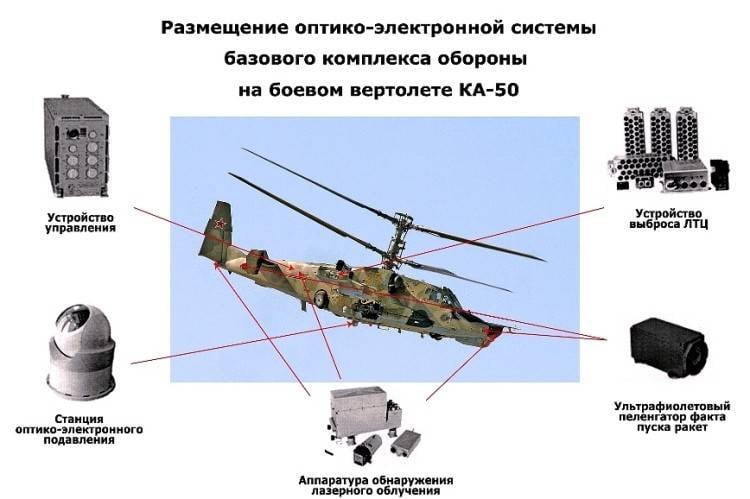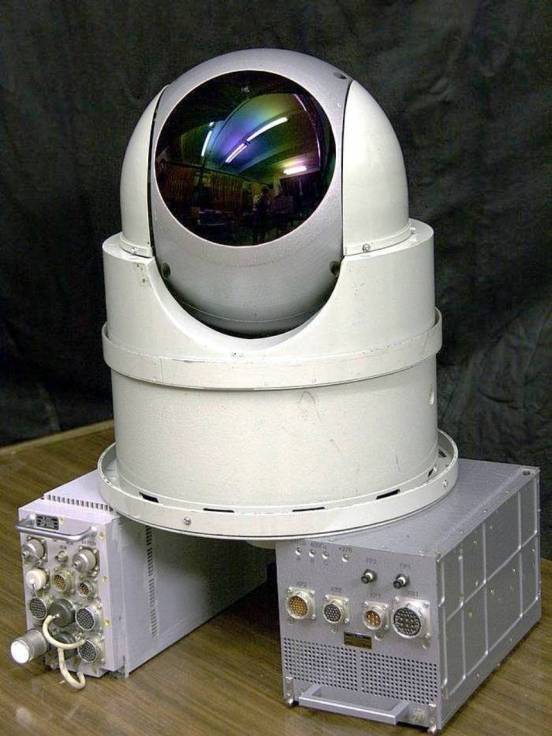Onboard defense complex L-370 "Vitebsk" in battle
Over the past few years, the L-370 Vitebsk airborne defense system (BKO) has been installed on various aircraft and helicopters of our army. It is intended to detect the activity of enemy anti-aircraft weapons, detect missile launches and protect against an launched attack. Recently, the Ministry of Defense showed the use of this system during the current Special Operation.
Combat application
On March 12, the Ministry of Defense published a video dedicated to the recent landing operation at the Gostomel airfield near Kyiv. The main focus of this video is on the units of the airborne troops and their work. Also shown is the work of the army aviation, incl. attack helicopters Ka-52, which carried out fire support of the landing from the air.
The work of helicopters, as before, is demonstrated "through the eyes of pilots." The video includes shooting of the front hemisphere with an indicator on the windshield and the screen of the sighting and navigation system. The recordings were made on one or several Ka-52s; this question is not specified. The video from helicopters takes only a few seconds in total, but contains some very interesting moments.
The curious episode begins at the 23rd second of the video. The helicopter is flying towards the runway. At the same time, the voice informant consistently gives the signals “Attack from the left!” and "Attack from the front!" This indicates that the BKO "Vitebsk" has detected a threat from the ground and warns the crew about it. The pilot reacts to this with an evasive maneuver and comments: "he sees, everything is fine."

A similar episode is shown at the 2:47 mark. During the flight over the airfield sites, helicopter pilots hear a voice signal: “Attack from the front! "Stinger". The L-370 complex again detected the launch of an enemy missile and warns the crew about it. Moreover, according to the characteristic features, the BKO was able to identify the type of threat. The helicopters then made vigorous evasive maneuvers. At the same time, automation had to apply appropriate countermeasures.
As far as is known, during the capture of the Gostomel airfield, Russian front-line aviation did not suffer losses. This fact directly confirms the high performance and efficiency of Vitebsk. In a real battle, the complexes promptly identified threats to helicopters, took the necessary measures themselves and warned the crews. Thanks to this, attack and transport helicopters returned safely to their airfields - and brought unique video recordings.
Remedies
BKO L-370 "Vitebsk" was developed by the Samara Research Institute "Ekran" (part of the concern "Radioelectronic Technologies") since the end of the 2010s. In 2011, elements of the complex were presented for the first time at one of the exhibitions. Already in 12-XNUMX. new equipment began to be mounted on airplanes and helicopters of front-line and army aviation.

The processes of factory testing and fine-tuning, followed by state tests before being put into service, took several more years. They ended in 2015 with a very spectacular test. An Mi-8 helicopter with a working L-370 air defense system was placed on the open area of the landfill. 20 Igla MANPADS missiles were sequentially fired at it - and none of them reached the target. Under the influence of the means of the complex, the missiles deviated from the required trajectory and flew away to the sides.
Based on the test results, the L-370 product received recommendations for adoption and implementation. Industrial production of "Vitebsk" for the mass equipment of aviation equipment began in mid-2015. Later, in published materials from the Ministry of Defense and the aviation industry, it was possible to observe how BKO finds a place on new and modernized aircraft and helicopters. Already in 2019-20. it became known about equipping the entire fleet of helicopters of some models with Vitebsk.
Equipment with "Vitebsk" has repeatedly participated in various exercises of the armed forces, and the characteristics of the BKO were confirmed. Already in 2015-16. the new complex was tested in Syria, where there are real threats. Now equipment with this equipment is participating in the demilitarization of Ukraine, which previously had a fairly developed air defense system. As it is now clear, in all cases the L-370 complex shows high performance and generally copes with its tasks.
Technical features
BKO "Vitebsk" is a set of various means for installation on aviation equipment, designed to detect escort from the enemy's air defense, detect missile launches and subsequent disruption of the attack. Several configurations of the complex are offered with different equipment and different capabilities for different carriers. In this case, the devices can be mounted both inside and outside the airframe, on its different parts.
The basis of "Vitebsk" is the control device. It processes data from all sensors, issues warnings to the crew and independently uses other means. Along the perimeter of the aircraft, laser irradiation sensors are mounted that record the operation of air defense. It also provides for a set of ultraviolet direction finders that track missile launches.
The L-370 includes a set of countermeasures of all classes. Standard devices for shooting false thermal targets and dipole reflectors, a new digital active jamming station, as well as optoelectronic suppression devices are used. The latter are moving "balls" with a laser for direct impact on the missile's homing head.
Analyzing information from sensors, the Vitebsk control unit determines the presence and type of threat, as well as the direction to it. Then the most suitable means of defense is included in the work. To counter the radar or radar seeker, fired reflectors or a jamming station are used. Thermal OES or GOS are suppressed by the laser; threats are also removed with the help of LTC.
The carriers of the L-370 air defense system can be a fairly wide range of domestic aircraft and helicopters of current types. First of all, the complex was installed on Su-25 attack aircraft and Mi-28 and Ka-52 attack helicopters. It is also used on transport and combat Mi-35 and Mi-8AMTSh of various modifications. It was reported about the installation of "Vitebsk" on the aircraft of the special flight squad "Russia".
Perhaps in the future the list of carriers will be replenished, and not only with domestic equipment. Installation of BKO blocks on foreign aircraft and helicopters does not present a fundamental difficulty. An export version of Vitebsk called President-S has already been launched on the market.
Proven in practice
Front-line and army aviation operates at the forefront, where it encounters active opposition from the enemy's military air defense. There are several ways to protect yourself from such threats. First of all, it is equipping aircraft with special defense systems that respond to expected threats. In the past, these were separate jamming stations and blocks of false targets, and now a full-fledged multi-component defense complex has been developed.
The new domestic BKO L-370 "Vitebsk" has not only been brought to the series, but also massively implemented on various types of aircraft. Moreover, it has already been repeatedly used in real military operations with all the desired results. Practice has shown that Vitebsk meets the requirements and tasks set, and also reduces the risks for aviation to a minimum.


Information